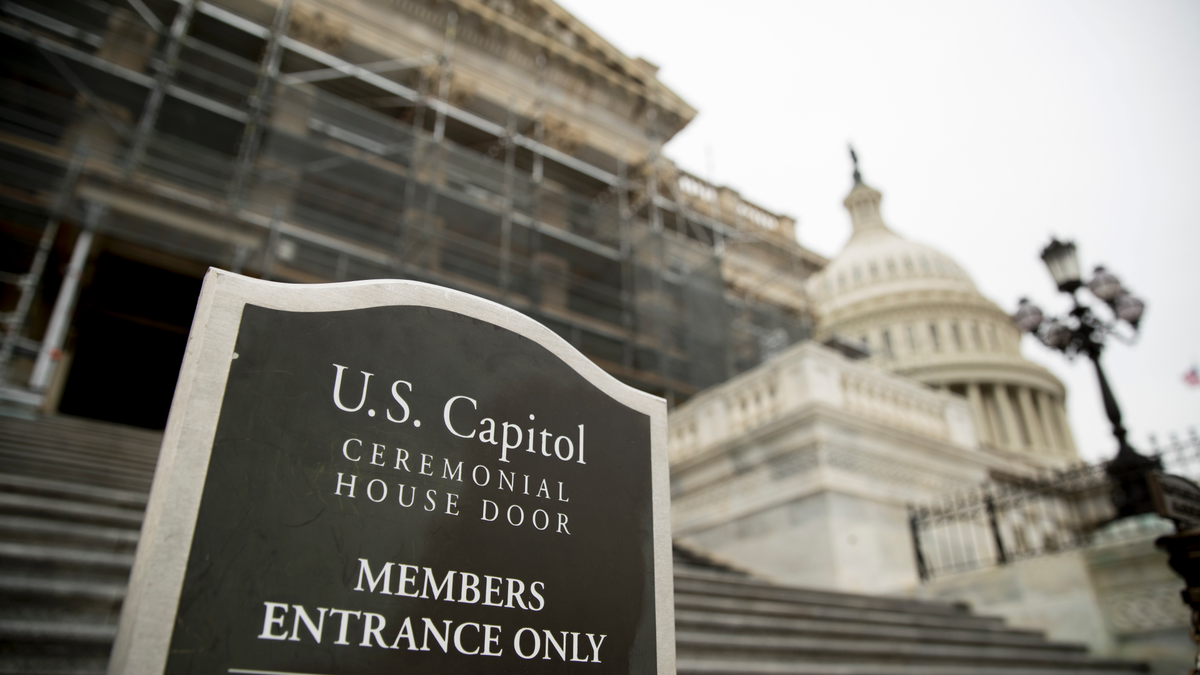
The House Chamber of the U.S. Capitol Building in Washington. (AP Photo/Andrew Harnik)
The American people – and just about all our elected officials – frequently and justifiably complain about the high cost of health care. But unless Congress acts, a tax increase on medical devices will take effect Jan. 1 and needlessly raise those costs even higher.
The 2.3 percent tax on medical devices was signed into law by President Obama and took effect in 2013. Fortunately, Congress passed legislation in 2015 and again in 2017 to temporarily suspend the tax. However, without further congressional action the tax will kick back in at the beginning of 2020.
Because the tax is only 2.3 percent it may sound like an insignificant amount. It’s not. Some medical devices are very expensive – for example, an MRI machine can cost up to $3 million. The 2.3 percent tax on that would amount to $69,000 – a cost that has to be ultimately paid by someone.
MEDICAL COMPANIES BRACE FOR 'DEVASTATING' OBAMACARE TAX, PREPARE FOR LAYOFFS
Fortunately, patients may get a reprieve. Sens. Pat Toomey, R-Pa., and Amy Klobuchar, D-Minn. (a candidate for the Democratic presidential nomination) recently introduced a bipartisan bill permanently repealing the tax on medical devices.
Repealing the tax would make health care and health insurance more affordable for all Americans. The repeal deserves support from both Democrats and Republicans in Congress.
One reason you haven’t heard more objections to this tax is that most Americans don’t even know it exists.
Repealing the tax would make health care and health insurance more affordable for all Americans.
Pacific Research Institute scholar Wayne Winegarden notes that the tax has been “priced into the costs of the product” and “has been applied inconsistently across products due to exemptions and short-term suspensions, which create difficulties for firms to plan and manage the tax; and, subjects some medical devices to double taxation.”
Of course, repealing this tax is just the tip of the iceberg in terms of what’s needed to reform America’s dysfunctional health care system. But piecemeal changes can resuscitate the push for wider reforms. Just because lawmakers can’t agree on everything needed to improve our health care system doesn’t mean they shouldn’t agree on anything.
Patients in need of health care would hardly be the only victims of a medical device tax. During the original implementation of the tax from 2013 to 2015, more than 20,000 industry jobs were lost as companies faced nearly $30 billion in lower sales.
For medical device manufacturers big and small, stagnant sales led to less research into innovative products that can save lives. With fewer products sold, reduced access for patients and less innovation, new technologies were prevented from coming to market. Everyone suffered as a result.
In addition, gray areas abound in the Internal Revenue Service’s tax guidelines for the medical device tax, leading to uncertainty for the manufacturers of new cutting-edge products.
CLICK HERE TO GET THE FOX NEWS APP
For example, the recently-invented Dermaclip is an alternative to stitches that can heal wounds more quickly and less painfully than conventional sutures. The rise of such easier-to-apply “skin closure devices” may lead to consumers being able to purchase and use them on their own, complicating the IRS’s exemption to the tax for any product “generally purchased by the general public at retail for individual use.”
By repealing the medical device tax, lawmakers can jumpstart health care innovation in the U.S. With a lighter touch from Uncle Sam, patients can see improved services at a lower price.
